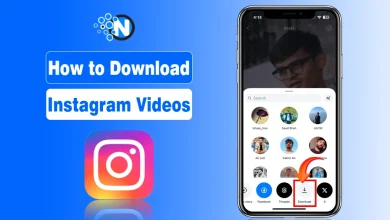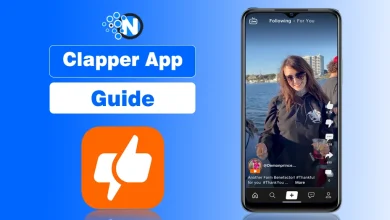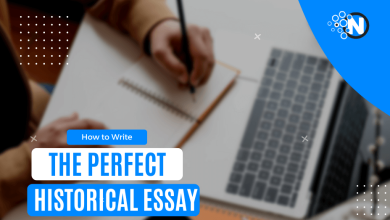How to Translate Videos & Audio to Any Language with VMEG AI
Video and audio content have become a daily part of your work and life over the years. According to Social Shepherd, online videos reach 92% of the global audience, and over 70% of viewers say they prefer content in their native language.
You know what causes the challenge to engage a massive audience: the language barrier. That’s why translating and localizing your videos has become more important than ever to expand your influence and stay competitive.
Have you ever thought about how to translate videos & audio to any language? Wanna know? If yes, then keep reading because this article will give you a complete understanding of how.
Why Translating Videos & Audio?
Think one thing before not going for translation… can a person living in South Africa understand your local language? Because it’s difficult for them to understand, but if you translate your videos and audios, ultimately, you will get a new audience.
Here is how translation can open new doors for you:
- Break Language Barriers: One video, understood everywhere, helps you to go global without extra shooting or editing.
- Build Viewer Trust: Audience engages more deeply when content is localized with natural sounds or native subtitles.
- Unlock New Revenue: Localized content isn’t just inclusive, but it’s a proven technique to earn subscribers, sales, and brand loyalty.
- Make Learning Accessible: This technique will also break the barriers, even if it’s e-learning or training videos from multilanguages.
How to Translate Videos & Audio with VMEG AI
The time has come to confront; you can’t just go to any software and translate your videos and audios. However, you will need proper and privacy-conscious software to translate your digital content on the web.
At this time, VMEG AI is a suitable option that is a professional video and audio localization platform designed for content creators. It works simply while making the translation process easy, budget-friendly, and helps to get quick, accurate results.
Did You Know? VMEG AI combines everything (translation, subtitles, dubbing, and lip-sync) into one platform. It’s like having a studio team on standby, but without the stress or high cost.
Key Features of VMEG AI
- Support for 170+ Languages: Translate and dub your content into 170+ languages, with automated speaker detection and subtitles that match the flow of speech.
- Natural Voice Cloning: Choose from over 7,000 voices or let the AI clone the original voice, preserving the tone, emotions, and speaking style, just like the original.
- Perfect Lip Sync: VMEG AI doesn’t just translate, it syncs the lip movements with dubbed audio, giving you a truly seamless experience.
- Fast Processing: Have a 2-hour video? VMEG AI gets it done in under 20 minutes, leaving you more time for creativity.
- Context Matters: VMEG’s smart algorithms understand the context of your content, delivering translations that feel natural and real up to 99% accuracy.
- Browser-Based: No downloads, no installation. Work directly in your browser with the peace of mind that your data is secure with encryption.
Pros and Cons of VMEG AI
| Pros | Cons |
|---|---|
| Wide Language Support with High Accuracy | Potential Cost |
| Ease of Use | Internet Required |
| Secure |
How to Use VMEG AI Video Translator
VMEG AI’s intuitive interface makes this process accessible even for beginners, while its advanced technology ensures professional-quality output. Here are the simple steps to translate any videos:
- Upload your video file directly from your device to your browser. Or copy & paste the YouTube URL.

- Select translation settings, including the source and target languages, voice dubbing style, and more.
- Wait for a while, and get the results. Preview and edit translations or dubbing if needed.
- Download the localized video/audio with embedded subtitles or dubbed audio track.
How to Translate Videos & Audio with Google Translate
- Launch your web browser and go to the Google Translate website.
- On the left side of the screen, click on the microphone icon to enable speech recognition.
- If prompted, allow Google Translate to access your microphone. This step is essential for capturing audio and transcribing it accurately.
- Begin speaking into your microphone or play the audio file you want to transcribe. For the best accuracy, ensure your audio is clear and free from background noise.
- As you speak, Google Translate will transcribe the audio in real-time. The text will appear in the right-hand box under the “Target” language.
- Once the transcription is complete, simply copy the text and use it for further translation or other tasks.
Limitations
- No dubbing or lip-syncing
- Accuracy depends on audio quality
- Manual workflows
- Lack of cultural sensitivity
Conclusion
Translating videos and audio is essential for anyone looking to expand their global reach, engage diverse audiences, or watch & learn multilingual video content. VMEG AI gives you the ability to translate, dub, and subtitle your videos.
As a fast, affordable, and high-quality solution, it can easily break language barriers and unlock new growth opportunities. Give VMEG AI a try with a free trial and see how easy it is to translate your videos and audio and break language barriers for a global experience.
Start now and take your content worldwide!
People Also Ask
Q1. How do I translate the audio of any video?
Simply upload your video, choose your languages, and let VMEG AI take care of the rest. It automatically translates and dubs your audio into 170+ languages with perfect voice cloning.
Q2. How long does AI video/audio translation take?
Processing time depends on file length and complexity. VMEG AI can process a 2-hour video in under 20 minutes.
Q3. Is my content secure during translation?
Reputable platforms like VMEG AI use encryption and secure protocols to protect your data.
Q4. Can I edit translations after processing?
Yes, most AI platforms allow you to review and edit translations like subtitle styles, emotion styles, etc.
Q5. What is the cost difference between AI and traditional translation?
AI-based video/audio translation typically costs 60-90% less than traditional human translation services, making it an affordable solution for creators and businesses alike.
Q6. Can I translate videos/audio with multiple speakers?
VMEG AI can detect and separate multiple speakers, preserving individual voice characteristics in translations.




